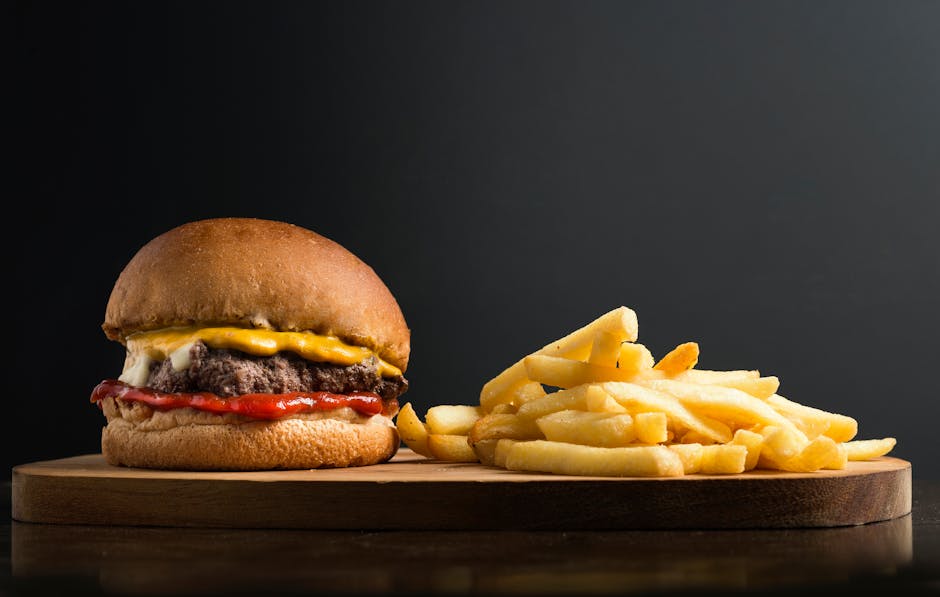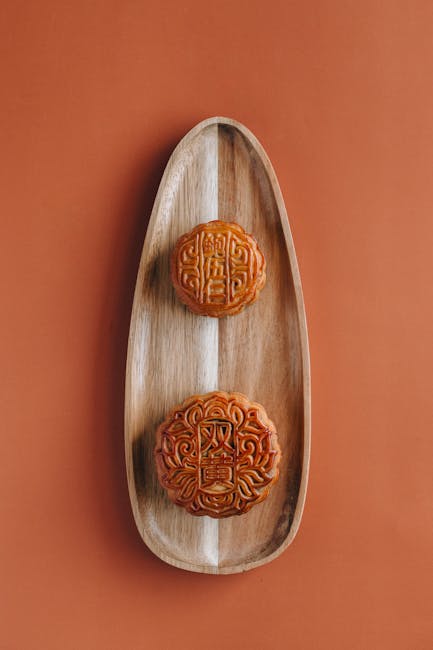Prepare yourself for a culinary journey to the heart of Sichuan Province, China, with a dish that’s as rich in history as it is in flavor: Authentic Chinese Dan Dan Noodles. Dan dan noodles (担担面), literally translating to shouldered-pole noodles, owe their name to the street vendors who traditionally carried their ingredients and cooking equipment on shoulder poles, selling these delectable noodles from their mobile setups. This humble origin speaks volumes about the dish’s accessibility and popularity, cementing its place as a beloved staple across China and beyond.
The history of Dan Dan noodles is deeply intertwined with the cultural fabric of Sichuan. While pinpointing an exact origin date is difficult, culinary historians believe the dish emerged in the late Qing Dynasty (1644-1912) or early Republican era in Chengdu, the capital city of Sichuan. These noodles weren’t initially the complex, flavorful creation we know today; they started as a simple, quick meal for laborers and the working class. The key element, the distinctively spicy and savory sauce, evolved over time, reflecting the region’s penchant for bold flavors and the use of chili peppers, a staple in Sichuan cuisine since their introduction from the Americas several centuries ago.
The sauce itself is the star of the show, a complex concoction typically featuring a base of fermented black beans (douchi), chili oil, Sichuan peppercorns (ma la), soy sauce, garlic, ginger, and often ground peanuts or sesame paste. This combination creates a symphony of flavors: numbing (ma), spicy (la), savory (xian), and fragrant (xiang) – the four pillars of Sichuan cuisine. The precise recipe varies from vendor to vendor, creating a fascinating diversity of interpretations, each boasting its unique character. The noodles themselves are typically thin wheat noodles, but regional variations may use broader or different types of noodles.
Today, Dan Dan noodles are far from a simple street food; they’ve transcended their humble beginnings to become a globally recognized dish. While precise statistics on global consumption are unavailable, the dish’s presence in countless restaurants and its prominent feature in Chinese culinary guides suggest enormous popularity. Beyond its deliciousness, Dan Dan noodles represent a significant piece of Chinese cultural heritage, a testament to the enduring legacy of street food, and a delicious example of how a simple dish can become a culinary icon.
Ingredients and Measurements
Creating authentic Dan Dan Noodles hinges on the quality and precise measurements of your ingredients. Don’t be tempted to substitute; each component plays a crucial role in the final flavor profile. This recipe yields approximately 4 servings.
Noodles: We recommend using fresh or dried wheat noodles, specifically those designed for Dan Dan Noodles. These are typically thin and slightly alkaline, providing a pleasing chewiness. Use 8 ounces (225g) of noodles. If using dried noodles, cook according to package directions until al dente. Fresh noodles will require less cooking time; aim for a texture that’s firm to the bite, not mushy. Overcooked noodles will absorb too much sauce and become unpleasant.
Dan Dan Sauce (the heart of the dish!): This is where the magic happens. Begin with 2 tablespoons of Sichuan peppercorns, toasted lightly in a dry pan until fragrant. Grind them coarsely using a mortar and pestle or spice grinder. This releases their unique numbing sensation. Next, prepare a mixture of 4 tablespoons of fermented black beans, finely minced. These provide a salty, umami depth. 2 tablespoons of Doubanjiang (fermented chili bean paste) add a spicy kick – adjust to your spice preference. 1 tablespoon of Chunjang (fermented soybean paste) contributes a savory, slightly sweet flavor. 1 tablespoon of finely minced ginger and 2 cloves of minced garlic add aromatic complexity. 1/4 cup of Sichuan preserved vegetables (Zha Cai), finely chopped, impart a distinct salty and crunchy texture. 1/4 cup of soy sauce provides saltiness and depth. 2 tablespoons of rice vinegar balances the richness. Finally, 1 tablespoon of sesame oil adds a nutty aroma and richness.
Protein: Traditionally, minced pork is used. Use 6 ounces (170g) of ground pork. For a leaner option, use a pork and chicken mixture. Properly browning the pork is key to developing its flavor. Do not overcook; you want it to be cooked through but still slightly moist.
Garnish: The garnishes elevate the dish visually and texturally. 1/4 cup of chopped scallions add freshness and a subtle onion flavor. 2 tablespoons of toasted sesame seeds contribute a nutty flavor and pleasing crunch. 1-2 tablespoons of chili oil (adjust to your spice preference) adds intense heat and a vibrant red color. Optional: A sprinkle of finely chopped peanuts adds another layer of texture and flavor. For a vegetarian option, substitute the pork with firm tofu, crumbled and pan-fried until golden brown.
Broth (optional): For a richer, more soupy version, prepare a simple broth using 1 cup of chicken or vegetable broth. Add this to the sauce after combining all other ingredients. Adjust the amount of broth to achieve your desired consistency.
Important Note: Adjust the amount of chili bean paste and chili oil to your preferred level of spiciness. Start with less and gradually add more until you reach your desired heat level. Taste and adjust seasonings as needed throughout the cooking process.
Equipment List
Creating authentic Dan Dan Noodles requires the right tools to achieve the perfect texture and flavor. This equipment list details essential items, along with recommendations for optimal results. While some substitutions are possible, using the recommended equipment will significantly enhance the overall dining experience.
WoK: A 14-16 inch carbon steel wok is ideal. The high heat conductivity of carbon steel is crucial for achieving the characteristic wok hei (smoky flavor) in the sauce and the perfectly seared ground pork. Avoid non-stick woks, as they won’t reach the high temperatures needed. If a wok isn’t available, a large, heavy-bottomed skillet can be used as a substitute, but the results might be slightly different. Proper seasoning of your wok is vital; a well-seasoned wok prevents sticking and enhances the longevity of the pan.
Mixing Bowls: You’ll need at least three mixing bowls of varying sizes. A large bowl (approximately 8-10 quart capacity) is essential for mixing the noodles and sauce. Two smaller bowls (approximately 3-4 quart capacity each) are useful for preparing the chili oil and the sauce components separately. Using stainless steel bowls is recommended for their durability and ease of cleaning.
Measuring Cups and Spoons: Accurate measurements are critical for achieving the desired flavor balance. Invest in a set of measuring cups (1 cup, ½ cup, ⅓ cup, ¼ cup) and measuring spoons (1 tablespoon, 1 teaspoon, ½ teaspoon, ¼ teaspoon). Using standardized measuring tools ensures consistency in your recipe every time.
Colander: A large colander is necessary for draining the cooked noodles. Choose a colander with a fine mesh to prevent noodles from slipping through. A sturdy colander that can comfortably hold a large portion of noodles is recommended.
Spatula/Wooden Spoon: A sturdy spatula or wooden spoon is essential for stirring and mixing the ingredients in the wok. A flat spatula allows for efficient scraping of the wok’s sides and bottom, ensuring even cooking. A wooden spoon is less likely to scratch the wok’s surface. Choose a heat-resistant spatula or wooden spoon that can withstand high temperatures.
Small Saucepan: A small saucepan (approximately 1-quart capacity) is needed for preparing the chili oil. A saucepan with a heavy bottom is preferred for even heating and preventing scorching.
Serving Bowls: Choose attractive serving bowls appropriate for the portion size. Deep bowls are best for holding the noodles and sauce without spillage.
Chopsticks and Serving Utensils: These are essential for enjoying and serving the Dan Dan Noodles. Consider using high-quality chopsticks and serving spoons for an authentic presentation.
Cutting Board and Sharp Knife: A large cutting board and a sharp knife are needed for prepping the vegetables and garnishes. A sharp knife ensures clean cuts and efficient preparation.
Preparing the Chili Oil
The chili oil is the heart and soul of authentic Dan Dan noodles, lending its vibrant color, intense aroma, and fiery kick to the dish. Making it from scratch elevates the experience significantly, allowing you to control the spice level and achieve a depth of flavor unmatched by store-bought versions. This recipe focuses on a balanced chili oil with a nuanced flavor profile, rather than simply overwhelming heat.
Ingredients:
- 1 cup vegetable oil (neutral flavor is best, like canola or grapeseed)
- 1/4 cup Sichuan peppercorns, lightly toasted and coarsely ground (essential for authentic aroma)
- 2 tablespoons dried chili flakes (adjust to your spice preference; use a mix of types for complexity, such as Sichuan chili flakes, gochugaru, and Kashmiri chili for varying heat levels and colors)
- 1 tablespoon ground Sichuan peppercorns (for added numbing sensation)
- 2 cloves garlic, smashed
- 1 inch piece of ginger, thinly sliced
- 1 small dried red chili, roughly chopped (optional, for visual appeal and added heat)
- 1/2 teaspoon ground cumin (optional, adds warmth)
- 1/4 teaspoon ground fennel seeds (optional, adds a subtle anise note)
Instructions:
1. Gentle Heating: Pour the vegetable oil into a small saucepan. Heat over low-medium heat. It’s crucial to avoid overheating the oil, as this can lead to burning and a bitter taste. The oil should be shimmering, not smoking.
2. Aromatics Infusion: Add the smashed garlic and ginger slices to the warm oil. Cook gently for about 2-3 minutes, until fragrant. This step gently infuses the oil with garlic and ginger notes, adding a layer of complexity to the final chili oil.
3. Spice Infusion: Add the ground Sichuan peppercorns, dried chili flakes, and optional dried red chili. Stir gently to ensure even distribution. Reduce the heat to very low. Let the spices simmer gently in the oil for 5-7 minutes, stirring occasionally. This allows the oil to infuse with the flavors and create the characteristically fragrant and flavorful chili oil.
4. Cooling and Filtering: Remove the saucepan from the heat and let the oil cool completely. Once cooled, strain the oil through a fine-mesh sieve or cheesecloth lined strainer into a clean jar or bottle. This removes the solids, leaving you with a smooth, vibrant chili oil. Discard the solids.
5. Storage: The chili oil can be stored in an airtight container in the refrigerator for up to 2-3 weeks. The flavor will deepen over time, so don’t be afraid to let it sit for a day or two before using.
Professional Recommendations:
- Use high-quality ingredients for the best results. The quality of your chili flakes and Sichuan peppercorns significantly impacts the final flavor.
- Adjust the spice level to your preference by varying the amount of chili flakes used.
- Be patient during the simmering process. Low and slow is key to extracting the full flavor from the spices without burning the oil.
- Experiment with other spices and aromatics to create your own unique chili oil blend. Star anise, cinnamon, or cloves can add interesting notes.
Making the Dan Dan Sauce
The dan dan sauce is the heart and soul of authentic Dan Dan Noodles. Its complex, savory, spicy, and slightly sweet flavor profile is what sets this dish apart. Getting the sauce right is crucial, so take your time and pay attention to detail. This recipe yields enough sauce for approximately 4 servings.
Ingredients:
- 2 tablespoons Sichuan peppercorns, lightly toasted and ground
- 1 tablespoon Sichuan chili bean paste (Doubanjiang) – adjust to your spice preference
- 1 tablespoon fermented black beans, rinsed and finely chopped
- 2 cloves garlic, minced
- 1 inch piece of ginger, minced
- 1/4 cup vegetable oil
- 2 tablespoons soy sauce (light or dark, depending on preference)
- 1 tablespoon Chinkiang black vinegar
- 1 tablespoon sesame oil
- 1 tablespoon sugar (or to taste)
- 1 teaspoon chicken broth (or vegetable broth for vegetarian option)
- 1/2 teaspoon ground white pepper
- Optional: 1-2 tablespoons finely chopped preserved mustard greens (for extra pungent flavor)
Instructions:
Step 1: Aromatics Infusion: Heat the vegetable oil in a small saucepan over medium heat. Add the minced garlic and ginger and sauté for about 30 seconds, until fragrant. Do not brown the garlic and ginger; this will impart a bitter taste.
Step 2: Spice Integration: Add the ground Sichuan peppercorns and Sichuan chili bean paste to the pan. Cook for 1-2 minutes, stirring constantly, until the chili bean paste is fragrant and the oil begins to coat the spices evenly. This step releases the complex flavors of the chili paste and peppercorns. Be careful not to burn the paste, as it can become bitter.
Step 3: Flavor Building: Stir in the fermented black beans, soy sauce, black vinegar, sesame oil, sugar, chicken broth, and white pepper. Bring the mixture to a gentle simmer. Reduce the heat to low and let it simmer for 5-7 minutes, allowing the flavors to meld and deepen. Taste and adjust seasoning as needed. You might want to add more sugar for sweetness, vinegar for tanginess, or chili bean paste for spiciness.
Step 4: Optional additions: If using preserved mustard greens, add them during the last minute of simmering. They will add a wonderful pungent and slightly sour note to the sauce.
Step 5: Finishing Touches: Remove the sauce from the heat and let it cool slightly. The sauce will thicken as it cools. If you find it too thick, you can thin it out with a little more chicken broth or water. Taste again and make any final adjustments to the seasoning.
Professional Recommendations:
- Toasting the Sichuan peppercorns enhances their aroma significantly. Toast them in a dry skillet over medium heat until fragrant, shaking the pan frequently to prevent burning.
- The quality of your ingredients greatly impacts the final flavor. Use good quality Sichuan peppercorns, chili bean paste, and sesame oil for the best results.
- Don’t be afraid to adjust the recipe to your personal preferences. Some people prefer a spicier sauce, while others prefer a milder one. Experiment with the amount of chili bean paste and sugar to find your perfect balance.
Once your dan dan sauce is complete, you’re ready to assemble your delicious Dan Dan Noodles!
Cooking the Noodles
The noodles are the foundation of authentic Dan Dan Noodles, and getting them right is crucial. We recommend using fresh alkaline noodles (jianmian), which offer a unique chewiness and texture that’s essential to the dish. However, if fresh alkaline noodles are unavailable, you can substitute with dried wheat noodles, but be aware the texture will differ slightly. For this recipe, we will use 8 ounces (225g) of fresh alkaline noodles.
Choosing the right noodles is paramount. Avoid using spaghetti or other Western-style noodles, as their texture and flavour profile will not complement the sauce properly. The alkaline noodles possess a slight bounce and a subtle, almost soapy taste that interacts beautifully with the spicy, savory, and umami elements of the Dan Dan sauce.
Bring a large pot of water (approximately 6 quarts/6 liters) to a rolling boil over high heat. The water must be vigorously boiling before adding the noodles to ensure even cooking and prevent sticking. Add a generous pinch of salt to the water – this seasons the noodles and enhances their flavour.
Once boiling, gently add the noodles to the pot, stirring gently to prevent them from sticking together. Avoid overcrowding the pot; if necessary, cook the noodles in two batches to ensure they cook evenly. Cook the noodles according to the package instructions, typically around 3-5 minutes for fresh noodles. Overcooked noodles will be mushy and ruin the texture of the dish.
While cooking, continuously stir the noodles gently with chopsticks or a long-handled spoon to prevent sticking. Check the noodles for doneness frequently by tasting a strand. They should be cooked through but still possess a firm bite – al dente. Undercooked noodles will be tough and unpleasant.
Once cooked, immediately drain the noodles in a colander. Rinse the noodles under cold running water to stop the cooking process and prevent them from sticking. This step is crucial, especially with fresh alkaline noodles which can become gummy if not rinsed properly. Give them a good rinse for about 30 seconds.
Do not let the noodles sit in the colander for too long as they will cool down and become sticky. After rinsing, gently toss the noodles with a tablespoon of vegetable oil or sesame oil to prevent sticking. This will coat the noodles and keep them separate, ensuring a pleasant eating experience. Now, your perfectly cooked noodles are ready to be tossed with the delicious Dan Dan sauce and garnishes.
Pro Tip: For an extra touch of authenticity, consider adding a small piece of dried seaweed (kombu) to the boiling water while cooking the noodles. This adds a subtle umami flavour that complements the overall dish.
Preparing the Toppings (e.g., preserved vegetables, minced pork)
The success of authentic Dan Dan Noodles hinges significantly on the quality and preparation of its toppings. These add depth of flavor and textural contrast to the noodles and spicy sauce. We’ll focus on two key components: preserved vegetables (typically Sichuan preserved mustard greens or zha cai) and minced pork.
Preparing the Preserved Vegetables (Zha Cai): Start with approximately 100g of high-quality Sichuan preserved mustard greens. These should be well-fermented but not overly salty or sour. Rinse the zha cai thoroughly under cold running water for at least 2-3 minutes. This crucial step removes excess salt and helps balance the overall flavor profile. Squeeze out as much excess water as possible using your hands or a clean kitchen towel. This prevents the noodles from becoming too watery. Finely chop the zha cai into small, roughly 0.5cm pieces. Avoid over-chopping, as you want to retain some texture.
Preparing the Minced Pork: Use 200g of ground pork, ideally a blend of lean and fatty cuts for optimal flavor and moisture. The fat renders during cooking, adding richness to the topping. Heat 2 tablespoons of vegetable oil in a wok or large skillet over medium-high heat. Add the minced pork and break it up with a spatula, ensuring it’s not clumping together. Cook until the pork is browned and the fat has rendered, about 5-7 minutes. Do not overcook the pork, as it will become dry and tough.
Seasoning the Minced Pork: Once the pork is browned, add 1 tablespoon of fermented black beans (douchi), finely chopped. These add a savory umami depth. Stir-fry for another minute. Next, add 1 tablespoon of Sichuan preserved mustard tuber (suan cai), finely minced. This adds another layer of complexity and a distinctive pungent aroma. Adjust the amount of suan cai based on your preference for spiciness. Finally, add 1 teaspoon of light soy sauce, ½ teaspoon of dark soy sauce (for color), and ½ teaspoon of sugar. Stir-fry for another 2-3 minutes until the sauce has thickened slightly and coats the pork evenly. Taste and adjust seasoning as needed. You may want to add a pinch of white pepper for extra warmth.
Optional Additions: For an even richer flavor profile, consider adding other aromatics during the pork cooking process. A small piece of ginger (finely minced), a few cloves of garlic (minced), or a small finely chopped chili can enhance the overall taste. Remember to adjust cooking times accordingly for these additions.
Important Note: The quantities listed above are suggestions and can be adjusted based on your personal preferences and the number of servings. Always taste and adjust seasoning throughout the cooking process to achieve the desired flavor balance. Properly prepared toppings are essential for creating an authentic and delicious bowl of Dan Dan Noodles.
Recommendations for Authentic Chinese Dan Dan Noodles
To fully enjoy your authentic Chinese Dan Dan Noodles, we recommend the following:
Serving Suggestions: For the best experience, serve your Dan Dan Noodles immediately after preparation. The noodles should be hot and the sauce should coat them evenly. Garnish generously with chopped scallions, cilantro, and a drizzle of chili oil for an extra layer of flavor and visual appeal. Consider adding a sprinkle of toasted sesame seeds for added texture and nutty aroma. For a truly immersive experience, enjoy your Dan Dan Noodles with chopsticks, allowing you to savor each strand individually. If you prefer a less spicy experience, serve with a side of plain rice or steamed vegetables to balance the flavors.
Storage Conditions: Leftover Dan Dan Noodles can be stored in an airtight container in the refrigerator for up to 2 days. However, we strongly recommend consuming them fresh as the noodles may become soggy and the sauce may lose its vibrant flavor and texture over time. Do not freeze Dan Dan Noodles, as this will significantly affect the quality of the noodles and sauce.
Complementary Dishes: Dan Dan Noodles are a flavorful and satisfying dish, but they can be complemented beautifully by other dishes. Consider serving them alongside a simple side salad with a light vinaigrette to provide a refreshing contrast to the richness of the noodles. A small plate of steamed dumplings or potstickers would also make an excellent accompaniment. For a more substantial meal, consider pairing the Dan Dan Noodles with a light soup, like a simple egg drop soup or a clear vegetable broth. These lighter dishes will allow the bold flavors of the Dan Dan Noodles to shine without overwhelming the palate.
Nutritional Information (Approximate per serving, based on a standard recipe): Calories: Approximately 450-550 (this can vary significantly based on the ingredients used and portion size). Protein: Approximately 15-20g. Fat: Approximately 20-25g (largely from the oil used in the sauce). Carbohydrates: Approximately 60-70g. Sodium: Moderately high due to soy sauce and other seasonings; exact amount varies with recipe. This information is an estimate and may not be entirely accurate depending on specific ingredient choices. For precise nutritional information, use a nutrition calculator with your specific ingredients and quantities.
Important Notes: The spiciness of Dan Dan Noodles can be adjusted to personal preference by adding more or less chili oil or chili flakes. If you are sensitive to spice, start with a small amount and add more gradually. Always ensure that all ingredients are fresh and of high quality for the best flavor and texture. Remember that the authentic taste relies on the balance of savory, spicy, and slightly sweet elements in the sauce; don’t skimp on any ingredient!





